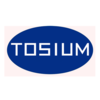各向異性和偏軸加載對1050車輪鋼疲勞性能的影響各向異性和偏軸加載對1050車輪鋼疲勞性能的影響Effect of Anisotropy and Off-Axis Loading on Fatigue Property of 1050 Wheel Steel 研究了各向異性和偏軸加載對軋制1050車輪鋼疲勞性能的影響,獲得試樣在2種特定加載條件下的疲勞極限,運用SEM觀察疲勞斷口形貌,并利用有限元分析軟件Ansys對0°、30°、45° 3個不同偏軸加載角度的試樣進行靜力學分析。結果表明:隨著試樣與軋制方向角度的增加,疲勞極限逐漸降低,0°到45°下降比例約為9%;隨著試樣偏軸加載角度的增加,疲勞極限亦逐漸降低,0°到45°下降比例約為85%;在偏軸加載的情況下,試樣承受的剪切應力與Von Mises等效應力較大,且隨著偏軸加載角度的增加而增加。 Wheel is one of the key components of a train to transmit power and affect the security operation. With the rapidly development of high-speed railway, rolling contact fatigue of railway wheels has become an important issue with respect to failure. With the increasing of train speeds and axle loads, the wheel-rail dynamic stress and contact stress were increased, resulting in wheel out of round with off-axis wear and potential for derailment. SAE 1050 steel as a typical wheel steel is widely used in high-speed wheel and wagon wheel. Consequently, the wheel rolling contact fatigue performance under service process and the fatigue performance of wheel steel materials have been studied. However, there are less relevant results about the anisotropy of rolling and off-axis loading of wheel steel materials. To investigate the effect of anisotropy and off-axis loading on fatigue property of 1050 wheel steel, uniaxial fatigue tests were conducted at the conditions of 120 Hz and stress ratio R=0.1, and off-axis fatigue tests were conducted at the conditions of 55 Hz and R=0.1 at room temperature in air. All fatigue specimens were cut from bar round with the angles (0°, 30° and 45°) to rolling direction. The fatigue limit of specimens under two kinds of special loading conditions was obtained. Fracture surface of the specimen was observed by SEM. The finite element (FEM) analysis software (Ansys 14.0) was used to analyze static mechanics of specimens under three different off-axis loading angles (0°, 30° and 45°). The results showed that the fatigue limit decreased with increasing angle to rolling direction and the percentage of decline was 9%. The fatigue limit decreased with increasing off-axis loading angle and the percentage of decline was 85%. The shear stress and Von Mises stress were larger and increased with increasing off-axis loading angle when the specimen was subjected to off-axis loading. 全文下載:http://pan.baidu.com/s/1qYmAy7q 上一篇: 處在變革中的醫用金屬材料
|







